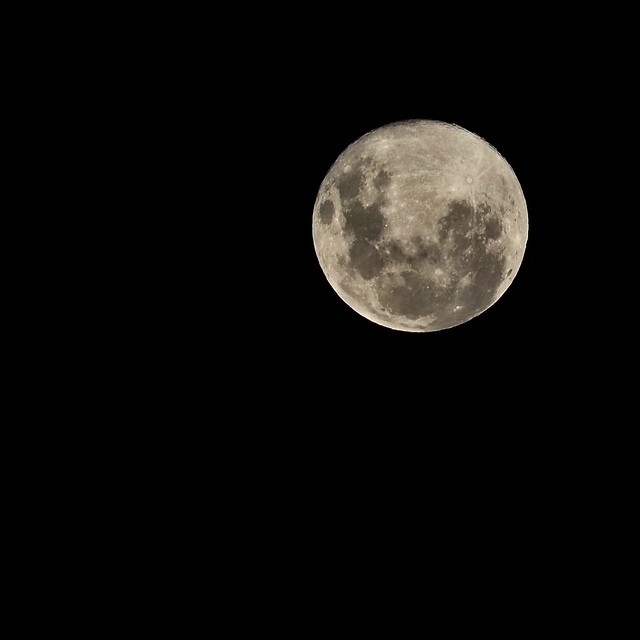
I must initially apologize in advance I'm sure you will see this image posted a lot tonight. This was taken around 7:30pm in Melbourne, Australia. I missed the moon as it rose above the horizon (because I can't see the eastern horizon from my place). I believe it had a golden tint . That colour coming from the earth's atmosphere, that the moonlight must travel through as it rises above the horizon.
I thought I should share my experience photographing the moon with a standard camera (I've used my baby Mirco Four Thirds model the Olympus OMD 10iii, if you want to see my exif data click on the image above and it will take you back to Flickr).
The first problem is the moon is well lit compared with a dark sky and the camera's selection of the best exposure (to achieve an average grey) is heavily biased by the black sky and tends to leave a very blown out moon with no detail. If you think about it the moon is being lit by the sun and is roughly the distance away from the sun as the earth so the illumination is the same as daylight here. A good exposure to get detail on the moon is very close to what we would use on a sunny day on earth (if you want to talk in M for manual terms, start around ISO 200 f8 and 1/100 second) Start around there and experiment a bit. I actually started there but using Apeture Priority and dropped the Aperture a little because I was using my telephoto (I wanted a bit more light) and it surprisingly gave me a speed on 1/800 using a spot exposure reading but that was great because I was handholding. An advantage of my mirrorless camera is I can see what the exposure setting looks like before I take the photo and I used the EV (exposure compensation) to then darken the brightness of the moon till I got good shadow definition of the moon's mountains and craters.)
The second problem is focus and most automatic focus systems will be hopeless at night, and you will usually end up with a burnt-out blur. The only solution I know of is to use manual focus (and if you have focus peeking that will be a great asset). However focusing at night can be very hard so a good solution is to do your very best but take a few photos, either with slight tweeks to your focus ring or dropping focus and focussing back it. Statistically, you should find at least one is in nice clean focus.
A bit of trial and error and you should find this a fun project, just a little cold in southern parts of Australia. You should be able to do it from your backyard if you are in a Covid19 lockdown and you should get something you are proud off, BUT expect there will be a lot of other amazing moon photos posted on social media.
I will check at around midnight but I'm not expecting a "pink" moon then.
(late update no pink moon, just a very bright full moon)
No comments:
Post a Comment